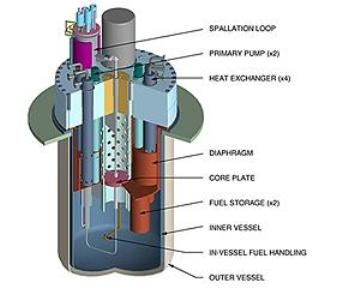 With the decision to extend the service life of German nuclear power stations and the demonstrations against Castor waste transport, the issue of a definitive solution for storage of nuclear waste is a hot topic once again.For instance, the suitability of the salt deposits in Gorleben, Lower Saxony, is being investigated once again, and other potential storage locations in
With the decision to extend the service life of German nuclear power stations and the demonstrations against Castor waste transport, the issue of a definitive solution for storage of nuclear waste is a hot topic once again.For instance, the suitability of the salt deposits in Gorleben, Lower Saxony, is being investigated once again, and other potential storage locations in
For instance, the suitability of the salt deposits in Gorleben, Lower Saxony, is being investigated once again, and other potential storage locations in
Although there is not yet a permanent storage location anywhere in the world, the most popular option is to store the waste hundreds of metres underground, in stable rock that is impervious to water. Now that nuclear waste from the early days of civil nuclear power has been able to cool off for a few decades and current storage facilities are filling up, the search for a permanent storage solution is ever more urgent.
But, in principle, there are techniques for reducing the volume of nuclear waste and transforming radioactive substances with especially long half-lives into isotopes that decay more quickly.
Transmutation - the solution to the nuclear waste problem?
Uranium, plutonium, americium and curium - all highly hazardous isotopes contained in spent nuclear fuel rods - can be transformed into substances with shorter half-lives in particle accelerators. Physicists call this process, which reduces the toxicity of the original substance, transmutation. But a large-scale transmutation facility is still far in the future.
With an investment of one billion Euro, a pilot facility will be commissioned in 2019 at the Belgian nuclear research centre SCK.CEN as part of the Myrrha project (Multi-purpose Hybrid Research Reactor for High-Tech Applications). After testing for several years, the facility will come into operation in 2024 to demonstrate the feasibility of large-scale transmutation.
Long-lived isotopes will be subjected to a stream of neutrons from the particle accelerator in what is known as a subcritical reactor, in which no self-sustaining chain reaction can take place, thus transforming them into short-lived isotopes.
These are still radioactive and hazardous, but they do not need to be stored securely for thousands of years, but for a much shorter time. This method will mean that much fewer and smaller permanent storage facilities will be required around the world.
The open question of viability
Whether industrial scale transmutation will ever be a financially viable option cannot be answered today. But the need to deal with 2500 tons of nuclear waste every year from the EUs 145 reactors alone is not going to go away. And even if the process is successful, the problem of permanent storage, although of smaller amounts of waste, still needs to be solved.
This means that the real price of a kilowatt-hour of nuclear-generated electricity - todays vaunted cheap option - needs to be recalculated. And whether the cost of nuclear power will still be lower than that of solar and wind power, even simply mathematically, is still questionable.

 Previous page
Previous page Back to top
Back to top







